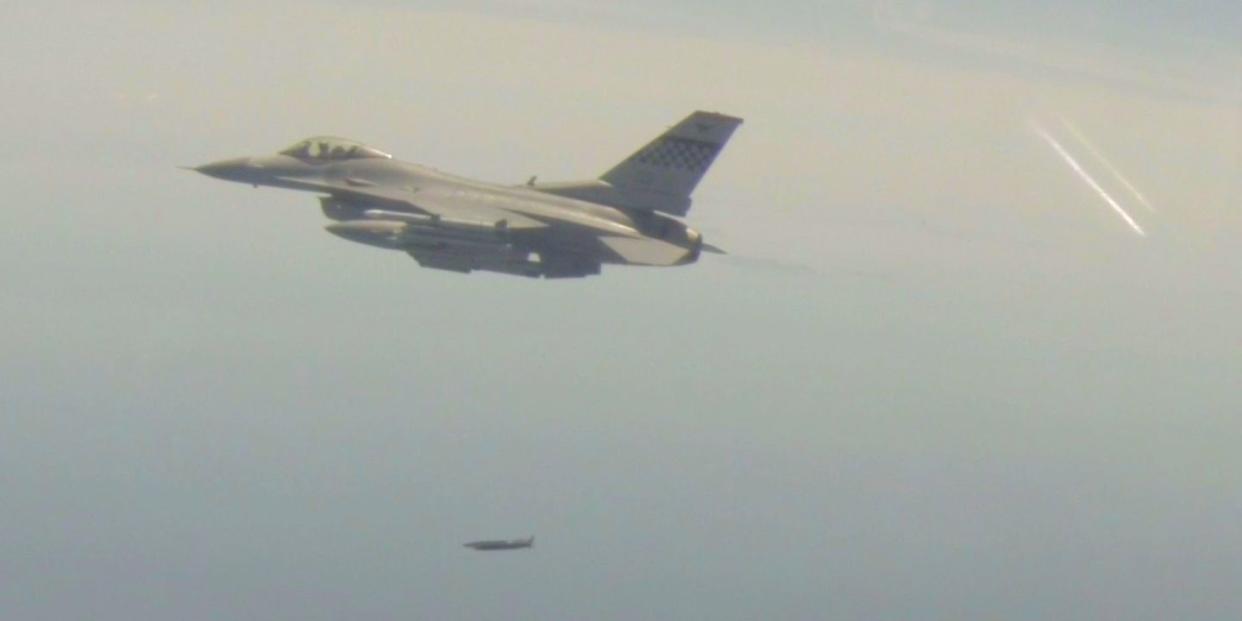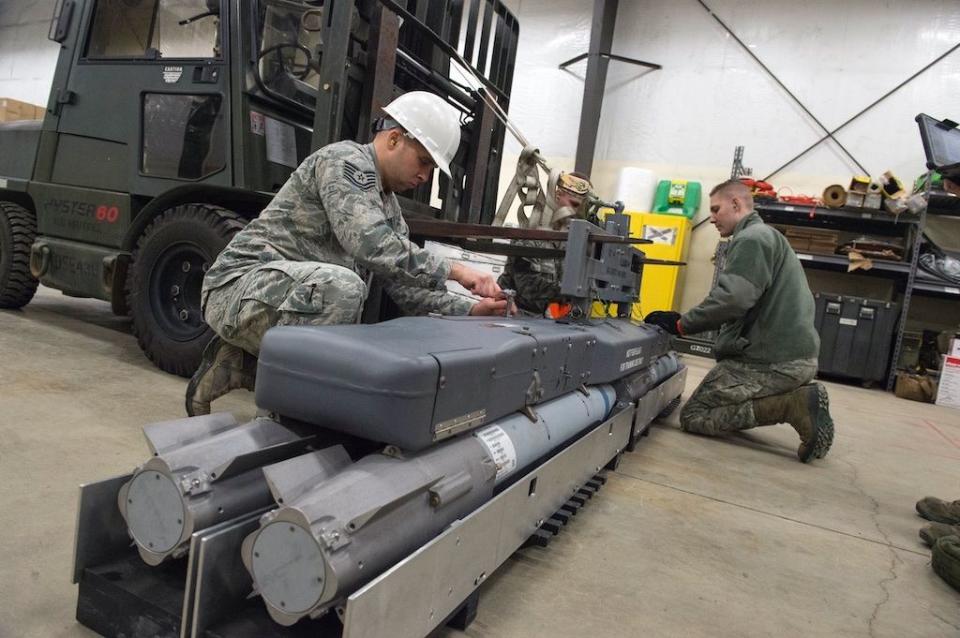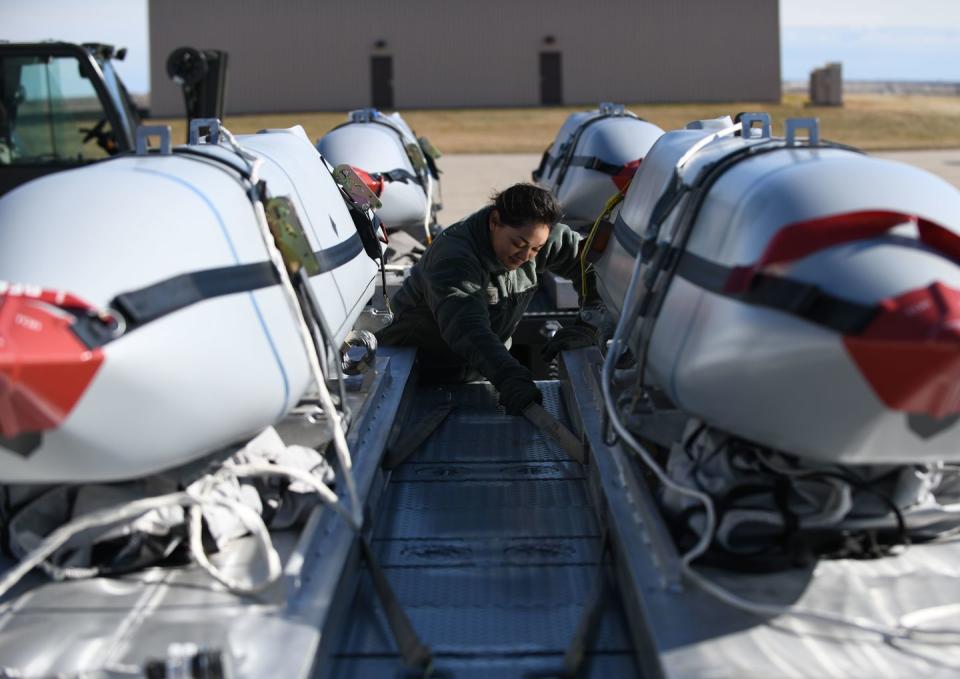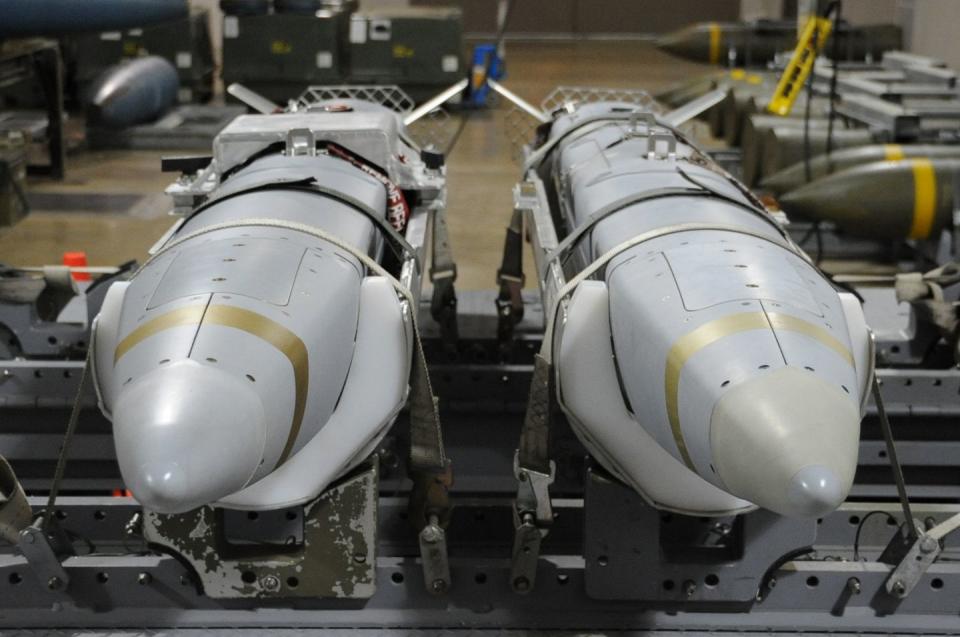The Air Force Is Moving From Smart Bombs to Thinking Bombs

The U.S. Air Force is preparing to test its new Golden Horde swarming munitions concept.
Golden Horde will allow weapons to make decisions and work collaboratively.
The munitions can change attack plans while en route to their targets.
The U.S. Air Force is preparing to test its new Golden Horde swarming munition concept for the first time, which would allow aircraft to launch multiple weapons against targets on the ground. Once in the air, those weapons could change their attack plans as they receive new information, actively making decisions about which targets to destroy.
Golden Horde represents a step change in weapons technology, building on “smart” weapons to make ones that actively “think.”

According to Defense News, the Air Force is planning to test its Golden Horde concept this fall, with weapons tests from an F-16 Fighting Falcon. Golden Horde involves placing datalink radios and collaborative behaviors on existing weapons, starting with the Collaborative Small Diameter Bomb I (CSDB-1) and Collaborative Miniature Air-Launched Decoy (CMALD). The behaviors operate what the service calls “playbooks,” allowing the weapons to make semi-autonomous decisions.
Here's how Golden Horde would work: A pair of F-16 fighters might target a set of concrete aircraft shelters at an enemy air base. The first fighter targets four shelters with four CSDB-1s, destroying two. The second fighter, flying right behind the first, releases its CSDB-1s while the first jet’s weapons are already in the air. The second fighter’s bombs receive data that two of the shelters are destroyed. The second flight of bombs, consulting Golden Horde’s playbook, reassigns the bombs in flight to destroy the remaining shelters.
The result is a more efficient use of munitions, allowing bombs to direct themselves against unserviced targets. This makes it less likely that human pilots would have to make a second run on their targets, which is particularly important in defended airspace, where air defenses that might have been caught by surprise by the first attack could be on full alert for a successive attack.
Instead of bracing themselves to make multiple passes against an increasingly alert adversary, pilots can release their weapons and then concentrate on flying their jet home.
The playbooks don’t allow Golden Horde-enabled weapons to be fully autonomous; they won’t look for new targets on their own. Instead, playbooks only allows weapons to make choices about striking existing targets: If Target A is not available, strike Target B, C, or team up with missile #7 to strike D. It's reasonable to assume this might eventually grow to include new, last-minute targets selected by human battle managers.

The ability for Golden Horde weapons to actually make a choice is new to weapons and warfare. In the past, weapons were called “smart weapons” due to their use of onboard maps, lasers, or GPS data to find their targets. Golden Horde, however, takes things a step further by actually making decisions. While the weapons lack real cognitive thought and are forced to choose from a narrow set of “plays,” the weapons do make decisions nonetheless.
Is Golden Horde a danger to civilians? Not more than any other weapon system. A target attacked by Golden Horde faces just as much destruction as one attacked by a human pilot. The larger issue is the target vetting process and ensuring targets that needlessly risk civilian lives don’t pass the approval process.
The Air Force emphasizes that Golden Horde "does not use artificial intelligence or machine learning to make determinations independently regarding which targets to strike. The system only selects from set plays and cannot violate defined Rules of Engagement."

According to Defense News, F-16 tests will be followed by B-52H bombers testing the Collaborative Miniature Air Launched Decoy (CMALD), a Golden Horde version of an air-launched drone designed to mimic friendly fighters on enemy radars.
The Joint Air to Surface Standoff Missile (JASSM), a large, subsonic cruise missile that was used in April 2018 to destroy Syria’s chemical weapon facilities, could be another weapon included in the Golden Horde in the future. JASSM is designed to fly hundreds of miles through defended airspace to attack critical targets, making every warhead count.
Movies like The Terminator have made the public understandably nervous about a future with autonomous weapon systems, and most armies have taken pains to preserve the “person in the loop” who can approve or disapprove of the use of lethal force. Golden Horde’s use of “playbooks” is another way to restrict the use of lethal force while still giving weapon systems a level of autonomy.
You Might Also Like

